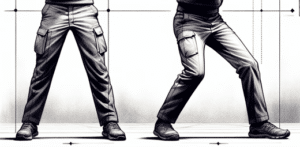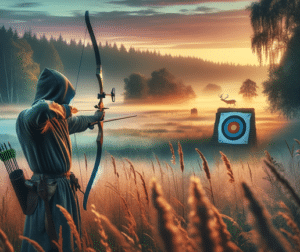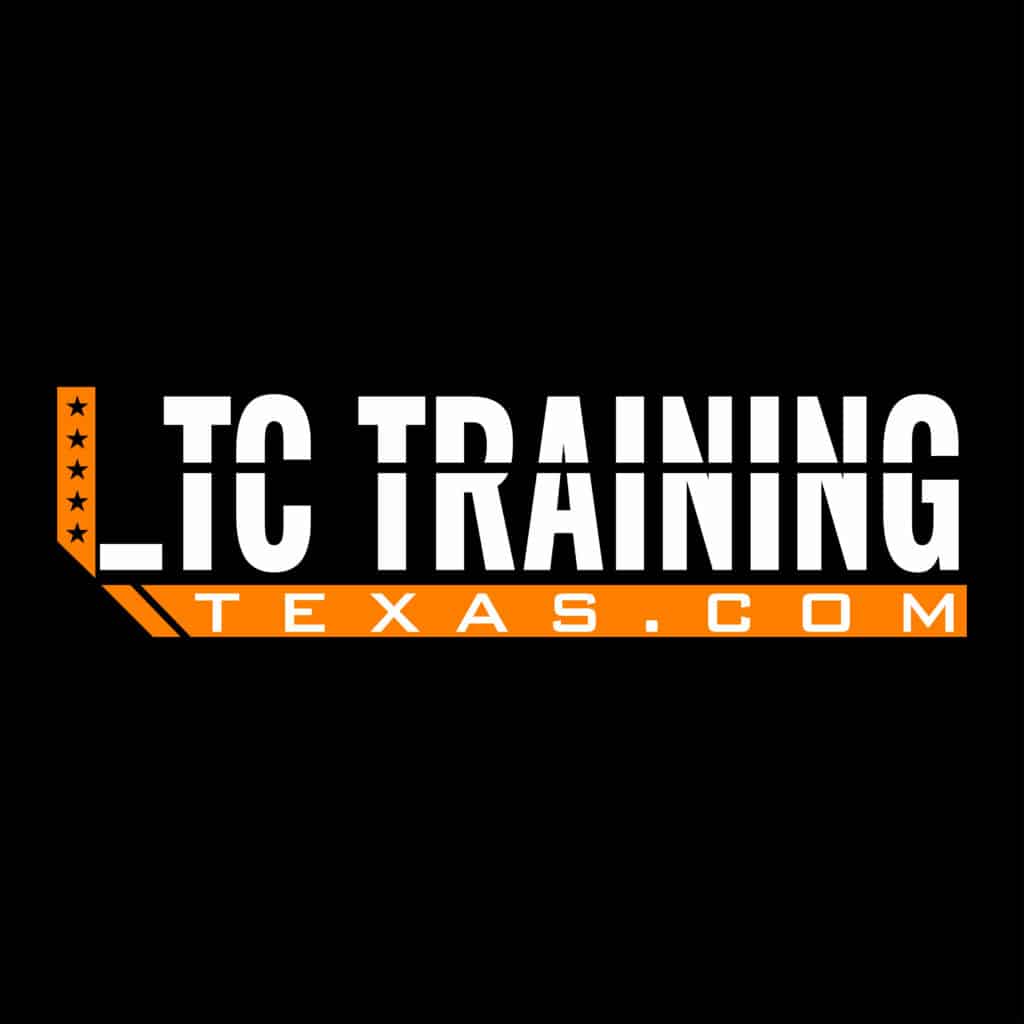
The art of archery dates back thousands of years, evolving from a vital hunting and warfare tool to a modern sport celebrated worldwide for its precision, discipline, and meditative qualities. Its origins can be traced to prehistoric times, when early humans relied on bows and arrows for survival. Throughout history, archery has held a significant place in various cultures, symbolizing might, skill, and heroism in legends and folklore.
Today, archery has found its niche as a competitive sport, a recreational activity, and a form of therapeutic exercise, appealing to a wide range of enthusiasts. Its inclusivity and versatility make it accessible to people of all ages and backgrounds, whether aiming for Olympic gold, enjoying a weekend hobby, or seeking a form of physical and mental relaxation.
This article aims to guide beginners through the exhilarating journey of mastering archery. From understanding the basic equipment to executing the perfect release, we will delve into essential techniques while also touching on advanced strategies for those looking to enhance their skills further. Join us as we explore the joy of hitting the mark and the boundless possibilities that lie beyond the bullseye.
Archery Equipment: Understanding the Basics
Types of Bows
- Recurve Bow: Known for its distinctive curves at each end, the recurve bow is a popular choice among beginners and Olympic athletes. Its design allows for greater force in the shot, making it easier to use with less strength.
- Compound Bow: Featuring a system of pulleys and cables, the compound bow is a modern invention that reduces the amount of force needed to hold the string at full draw. This makes it a favorite for hunting and long-range shooting.
- Longbow: The longbow is a tall, straight bow that lacks the recurve’s curves and the compound’s mechanical aids. It is valued for its simplicity and historical significance, often used in traditional archery.
- Crossbow: Differing significantly in design, the crossbow shoots arrows (called bolts) and is held horizontally. It uses a mechanism to hold the drawn bow string, allowing for more powerful shots without the physical strain of holding the draw.
| Type of Bow | Distinctive Features | Advantages |
| Recurve Bow | Curves at each end of the bow increase the power of the shot. | Easier to use with less strength, popular among beginners and Olympic athletes due to its efficiency and power. |
| Compound Bow | Utilizes a system of pulleys and cables to reduce the force needed to hold the string at full draw. | Reduces the amount of force needed to hold at full draw, making it ideal for hunting and long-range shooting. |
| Longbow | Tall, straight bow without the mechanical aids of a compound bow or the curves of a recurve. | Valued for its simplicity and historical significance, often used in traditional archery. |
| Crossbow | Held horizontally and uses a mechanism to hold the drawn bow string, shoots arrows called bolts. | Allows for more powerful shots without the physical strain of holding the draw, differing significantly in design. |
Essential Gear
- Arrows: The choice of arrows will depend on the bow type and the archer’s purpose. Factors like material (wood, aluminum, carbon), length, and tip type play crucial roles in performance.
- Quivers: Used to hold arrows, quivers can be attached to the bow, worn on the body, or placed on the ground, depending on the archer’s preference and the shooting context.
- Armguards and Gloves/Finger Tabs: Protective gear such as armguards shield the arm from string slap, while gloves or finger tabs protect the fingers during the draw, enhancing comfort and control.
Choosing Your First Bow
Selecting your first bow is a crucial step in your archery journey. Consider the following factors:
- Draw Weight: The amount of force required to pull the bowstring. Beginners should start with a lower draw weight to develop proper technique without strain.
- Bow Length: A longer bow offers greater stability, which can be beneficial for beginners, but the right length also depends on the archer’s arm span.
- Dominant Eye: Also known as “eye dominance,” this will determine your aiming eye and can influence the choice of bow handedness.
This foundational knowledge of archery equipment not only prepares you for your first shot but also enhances your understanding of the sport’s intricacies. With the right gear in hand, you’re ready to step onto the path of mastering the art of archery.
Setting Up for Success: Preparing to Shoot
Before an arrow can be loosed towards its target, an archer must adopt the correct stance and prepare the bow and arrow for the shot. This preparation is pivotal in archery, as it sets the foundation for accuracy and consistency.
Finding the Right Stance
- Square Stance: Stand with your feet shoulder-width apart, perpendicular to the target line. This stance offers stability and is ideal for beginners.
- Open Stance: Slightly rotate your front foot (closest to the target) outward. This minor adjustment can help with aligning your body more naturally towards the target, improving comfort and accuracy.

Nocking the Arrow
Secure the arrow onto the bowstring with the odd-colored vane (the fletching) facing outward. This ensures that the arrow clears the bow without interference. The arrow should click into the string’s nocking point, a small marker indicating where the arrow should be positioned.
Drawing the Bow
Grip the bow handle with your non-dominant hand, keeping your grip relaxed to prevent torque that could misalign the shot. Pull the string back with your dominant hand, using a finger tab or glove to protect your fingers. Draw the bow back to a consistent anchor point on your face, such as the corner of your mouth or under your chin, to ensure uniformity in each shot.
Aiming Techniques
- Instinctive Shooting: This method involves no aiming devices, relying instead on the archer’s intuition and muscle memory to direct the arrow to the target.
- Using Sights: Attachable sights can help archers aim more precisely. The sight is adjusted based on distance and shooting conditions, guiding the archer’s aim through a small reference point.
Releasing the Arrow: Technique and Tips
The moment of releasing the arrow is critical in determining the flight path and accuracy of the shot. A smooth, controlled release combined with a steady follow-through are the hallmarks of a skilled archer.
The Grip
Your grip on the bow should be firm yet relaxed to avoid adding any unwanted torque. The pressure should be distributed through the base of the thumb, allowing the fingers to lightly wrap around the grip without squeezing.
The Release
A clean release is achieved by letting the string slip out of your fingers or releasing the mechanical aid (for compound bows) without jerking or snapping. The motion should be fluid and consistent, with minimal movement of the hand and fingers to avoid influencing the arrow’s flight.
Follow-through
Continuing the motion even after the arrow has left the bow is essential for maintaining the trajectory and avoiding any last-minute deviations. Keep your bow arm steady and your drawing hand should continue its backward motion along the neck, reinforcing the straight path of the arrow.
Beyond the Basics: Advanced Techniques
Advancing in archery involves delving deeper into the mechanics of shooting, equipment tuning, and mental preparation. These components are crucial for those looking to refine their accuracy, increase their range, and compete at higher levels.
Understanding Arrow Dynamics
- Spine: The spine of an arrow refers to its stiffness. Selecting an arrow with the correct spine for your bow’s draw weight is vital for ensuring that the arrow flies straight and true.
- Weight: The weight of the arrow affects its trajectory and penetration. Heavier arrows fly slower but are less affected by wind, while lighter arrows offer faster speeds and a flatter trajectory.
- Flight Behavior: Factors like fletching size and shape also influence how the arrow behaves in flight. Experimenting with different configurations can help optimize performance for specific conditions.
Fine-tuning Your Equipment
- Adjusting Draw Weight: As you develop strength and technique, adjusting the draw weight of your bow can improve power and accuracy.
- Sights and Stabilizers: Fine-tuning sights for precision aiming and using stabilizers to minimize bow movement can significantly enhance shot consistency.
- String and Cable Maintenance: Regular maintenance of your bow’s string and cables ensures optimal performance and safety.
Mental Focus and Visualization
- Concentration Techniques: Developing the ability to focus deeply on your shot process can help block out distractions and improve consistency.
- Visualization: Visualizing the perfect shot from start to finish before releasing the arrow can enhance muscle memory and confidence.
Practicing Effectively: Tips for Improvement
The key to mastering archery is not just regular practice but practicing effectively. With a focused approach, you can make significant progress in your skills and enjoy the satisfaction of improvement.
Setting Up a Practice Routine
- Frequency and Duration: Consistent practice is more beneficial than sporadic, long sessions. Aim for shorter, more frequent practice times to maintain and improve skills.
- Goal Setting: Establish clear, achievable goals for each practice session, whether working on form, increasing distance, or improving accuracy.
Drills to Enhance Performance
- Blank Bale Shooting: Practicing at close range without a target helps focus on form and technique without the pressure of scoring.
- Grouping and Distance: Shoot groups of arrows at various distances to improve consistency and learn how to adjust for range.
- Pressure Scenarios: Simulate competition conditions or set challenges for yourself to become accustomed to shooting under pressure.
Analyzing and Learning from Your Shots
- Keeping a Log: Record your practice sessions, noting what worked well and areas for improvement. This can help track progress over time.
- Video Analysis: Recording your shooting can reveal inconsistencies in your form or technique that you might not notice otherwise.
- Seeking Feedback: Don’t hesitate to seek advice from more experienced archers or coaches who can provide valuable insights and suggestions.
Safety and Etiquette: The Archer’s Code
Safety and respect are paramount in archery, whether practicing alone, shooting at a range, or participating in competitions. Adhering to established safety guidelines and etiquette ensures a positive experience for everyone involved.
Range Safety Rules
- Listen to the Range Officer: Always follow the commands and instructions of the range officer or instructor. Their primary concern is safety.
- Never Point a Bow at Another Person: Even if it’s unstrung or unloaded, treat every bow as if it were ready to shoot.
- Only Nock an Arrow When It’s Safe: Wait for the clear signal to shoot before placing an arrow on the bowstring.
- Be Aware of Your Surroundings: Ensure that the area downrange is clear of people or potential hazards before shooting.
Field Archery and Hunting

Field archery and hunting introduce additional safety considerations, including navigating uneven terrain and the ethical treatment of wildlife.
- Know Your Target and Beyond: Never shoot unless you have a clear, safe shot and are certain of what’s behind your target.
- Respect Wildlife and Environment: Follow local laws and ethical guidelines for hunting, focusing on humane practices and conservation.
Archery Etiquette
- Wait Your Turn: Respect shooting lines and wait for others to finish before retrieving arrows.
- Offer Assistance and Encouragement: Archery is a community sport. Helping others, offering advice, and cheering for fellow archers strengthen bonds and improve everyone’s experience.
- Maintain Equipment and Clean Up: Keep your gear in good condition and pick up any litter to preserve the quality of the shooting environment.
Summary
From the moment an archer nocks their first arrow to the countless hours spent perfecting their technique, archery is a path of continuous learning and enjoyment. It offers a unique blend of physical challenge, mental discipline, and spiritual growth that appeals to a diverse group of people around the world.
Whether you’re drawn to the historical aspects of the sport, the competitive arena, or the simple joy of shooting arrows at a target, archery welcomes you. It’s a sport that rewards patience, precision, and persistence, allowing each archer to embark on their own personal journey towards mastery.
As we conclude our exploration of archery, from the basics of equipment and technique to the broader aspects of safety, community, and personal growth, remember that the journey is as rewarding as hitting the bullseye. Archery offers a unique opportunity to connect with history, nature, and a global community of enthusiasts, all while pursuing the simple yet profound goal of mastering the art of the bow and arrow.
The path from bullseye to beyond is paved with challenges, triumphs, and the endless pursuit of perfection. Whether you are just beginning your journey or seeking to deepen your understanding and skill, archery holds a place for you. Embrace the discipline, join the community, and discover the joy and fulfillment that comes from mastering the art of archery.
Glossary
| Term | Definition |
| Anchor Point | A consistent point on the archer’s face (e.g., corner of the mouth, under the chin) where the hand or string is placed at full draw. |
| Armguard | A protective device worn on the forearm of the bow arm to prevent injury from the bowstring upon release. |
| Arrow Rest | A device attached to the bow where the arrow sits before and during the draw. |
| Bowstring | The string that connects the two ends of the bow and is pulled back to propel the arrow. |
| Draw Weight | The amount of force, measured in pounds, required to pull the bowstring to a specific draw length (usually 28 inches). |
| Fletching | The feathers or plastic vanes attached near the arrow’s back end to stabilize its flight. |
| Nocking Point | The specific spot on the bowstring where the arrow nock is placed. |
| Quiver | A container used to hold arrows. It can be worn on the body or attached to the bow. |
| Recurve Bow | A type of bow where the tips curve away from the archer when the bow is unstrung, providing greater force when shot. |
| Release | The act of letting the bowstring go to shoot the arrow. |
| Sight | A device mounted on the bow to aid in aiming. It can be adjusted for distance and conditions. |
| Stabilizer | A weight added to the bow to balance it, reduce vibration, and improve the accuracy of the shot. |
| Target Panic | A psychological condition where an archer is unable to release the arrow at the right moment due to anxiety. |
| Tiller | The difference in distance from the bowstring to the limb on the upper and lower parts of the bow, used to balance the bow. |






